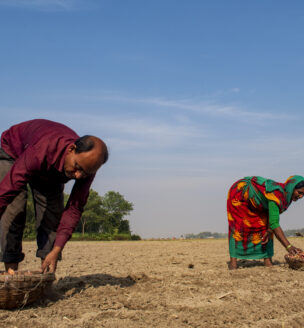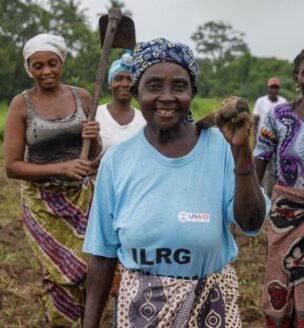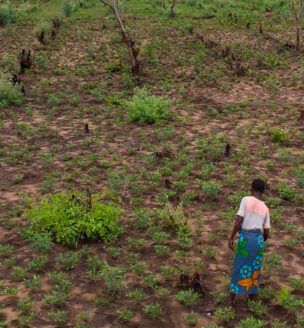In 2019, USAID launched the ENRM Framework to coordinate, unify, and elevate environmental and natural resource management across the Agency.
The ENRM Framework provides a new business model for USAID and a vision for integration that will help us work better and smarter across sectors to improve environmental outcomes, streamline field support, and align with major strategic shifts at the Agency.
The ENRM Framework is not a new strategy or initiative and does not create new reporting requirements; it provides direction, articulates priorities, outlines a unifying vision to address emerging challenges and the most critical threats to the environment and development, and serves as a guiding document for cross-sectoral investments in environmental and natural resource management.
Introduction
Sound management of environmental and natural resources is integral to a country’s development, resilience, and self-reliance. USAID selected “biodiversity and habitat protections” as one of the primary Self-Reliance Metrics because a country’s commitment to environmental protection and inclusive management of natural resources is key to advancing a host of broader development goals. Sustainable economic growth that incorporates the responsible use of natural resources and applies environmental safeguards proactively is critical for the Journey to Self-Reliance. Activities such as agriculture, animal husbandry, forestry, fisheries, mining, urbanization, and infrastructure development can have a significant impact on the environment and a country’s future, which underlines the need for close integration of environmental and natural-resource management with economic growth and social change.
The United States has provided long-standing and robust financial and technical support through its foreign-assistance programming for environmental and natural-resource management in developing countries. These investments demonstrate American leadership and values abroad not only because they promote self-reliance, but also because their results are critical to global safety and security. In the 2018 Worldwide Threats Assessment, the Office of the Director of National Intelligence stated, “[T]he impacts of the long-term trends toward a warming climate, more air pollution, biodiversity loss and water scarcity are likely to fuel economic and social discontent—and possibly upheaval—through 2018.” The U.S. Department of State-USAID Joint Strategic Plan similarly finds that, “environmental threats such as water scarcity and biodiversity loss can further fuel tensions over much-needed resources,” and identifies environmental management, governance, and resilience as core components of our strategic objective to promote healthy, educated, and productive populations in partner countries to drive inclusive and sustainable development (SO 2.2). Similarly, the prosperity-focused pillar of the President’s National Security Strategy (NSS) states that, “the United States will remain a global leader in reducing traditional pollution, as well as greenhouse gases,” and, “will continue to advance an approach that balances energy security, economic development, and environmental protection (Pillar II, pg. 22).” The NSS also makes it clear that, in a time of this great power competition, “American-led investments represent the most sustainable and responsible approach to development.”
USAID is committed to supporting governments, civil society, and the private sector in our partner countries on their Journey to Self-Reliance, including through strategic investments in environmental and natural-resource management and the robust integration of environmental protection into our programs. USAID’s continued leadership in this sector will ensure more sustainable, country-led, effective, and equitable efforts to protect and manage environmental and natural resources and foster efforts to promote healthy, educated, and productive populations in partner countries. The Environmental and Natural-Resource Management Framework responds to global trends and highlights opportunities to strengthen positive linkages in two priority areas: (1) improving natural resource management for self-reliance; and, (2) improving urban systems for a cleaner environment and enhanced human well-being. In alignment with the Agency’s Policy Framework, the Framework also explicitly identifies approaches to promote country progress; seek sustainable, resilient results; and invest for measurable impact in environmental and natural-resource management.







